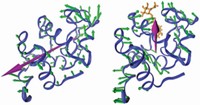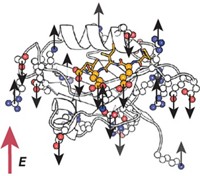Advertisement
Grab your lab coat. Let's get started
Welcome!
Welcome!
Create an account below to get 6 C&EN articles per month, receive newsletters and more - all free.
It seems this is your first time logging in online. Please enter the following information to continue.
As an ACS member you automatically get access to this site. All we need is few more details to create your reading experience.
Not you? Sign in with a different account.
Not you? Sign in with a different account.
ERROR 1
ERROR 1
ERROR 2
ERROR 2
ERROR 2
ERROR 2
ERROR 2
Password and Confirm password must match.
If you have an ACS member number, please enter it here so we can link this account to your membership. (optional)
ERROR 2
ACS values your privacy. By submitting your information, you are gaining access to C&EN and subscribing to our weekly newsletter. We use the information you provide to make your reading experience better, and we will never sell your data to third party members.
Analytical Chemistry
ACS Meeting News: A protein’s ‘dance steps’ affect its biological function, study shows
by Mitch Jacoby
April 4, 2017

A new microspectroscopy technique can track changes in the overall direction of complex protein vibrations. The method could enable researchers to determine how an enzyme responds when an inhibitor binds to it, for instance, or when the enzyme develops a mutation.
“Global vibrations” can be thought of as intricate dance steps performed by proteins. The new technique provides an unprecedented up-close look at how those dance steps shift when a protein’s conformation changes, a process that underpins important biological functions.
At the American Chemical Society national meeting in San Francisco on Tuesday, physicist Andrea G. Markelz of the University at Buffalo, SUNY, reported that by using her group’s technique, anisotropic terahertz microscopy, she and her coworkers observed something unexpected.
Working with grad student Katherine A. Niessen and others, Markelz found that a protein can undergo large changes in these dance steps even though the overall protein vibrational energy hardly changes at all (Biophys. J. 2017, DOI: 10.1016/j.bpj.2016.12.049). That’s noteworthy, Markelz explained during a session sponsored by the Division of Physical Chemistry, because some researchers have long speculated that changes in the directions of these global vibrations can boost the efficiency of biological functions such as enzymatic activity. But little experimental evidence has been available to support that idea.
The Buffalo group now knows why. Researchers had assumed that biologically relevant changes in vibrations would be accompanied by obvious changes in a protein’s vibrational energy states. Because researchers—until now–have been able to only measure energy state distributions, and studies had shown that those didn’t really change, the scientists concluded that the dance steps didn’t change either.
The Buffalo researchers carried out several analyses and found out that those assumptions don’t hold true. First, they used the terahertz microscopy method to study the vibrations of chicken egg-white lysozyme, a natural antibiotic. They compared the free form of the enzyme to the enzyme bound to tri-N-acetyl-D-glucosamine, a compound that inhibits enzyme action. The dance steps of the two forms differed dramatically. Yet inelastic neutron-scattering measurements showed almost no difference in energy.
The team also compared regular lysozyme to a structurally altered form known as a double-deletion mutant. The mutations are located far from the enzyme’s catalytic site and would be expected to have no effect on enzyme action. Yet the mutant mediates catalytic reactions nearly 1.5 times as efficiently as the regular enzyme. The team’s analyses show that the vibrational energy distributions of the two forms are identical. The directions of the vibrations, however, differ markedly, indicating that the mutant’s distinct motions give it a catalytic advantage.
“This is absolutely superb work,” said Steven D. Schwartz, a specialist in theoretical and computational biochemistry at the University of Arizona. Schwartz explained that there is an important ongoing debate regarding the role global vibrations play in the catalytic functions of enzymes. Settling that debate requires direct measurement of these motions while enzymes are carrying out reactions. “That is precisely the promise of this of this work,” he said.
Other related stories:





Join the conversation
Contact the reporter
Submit a Letter to the Editor for publication
Engage with us on Twitter